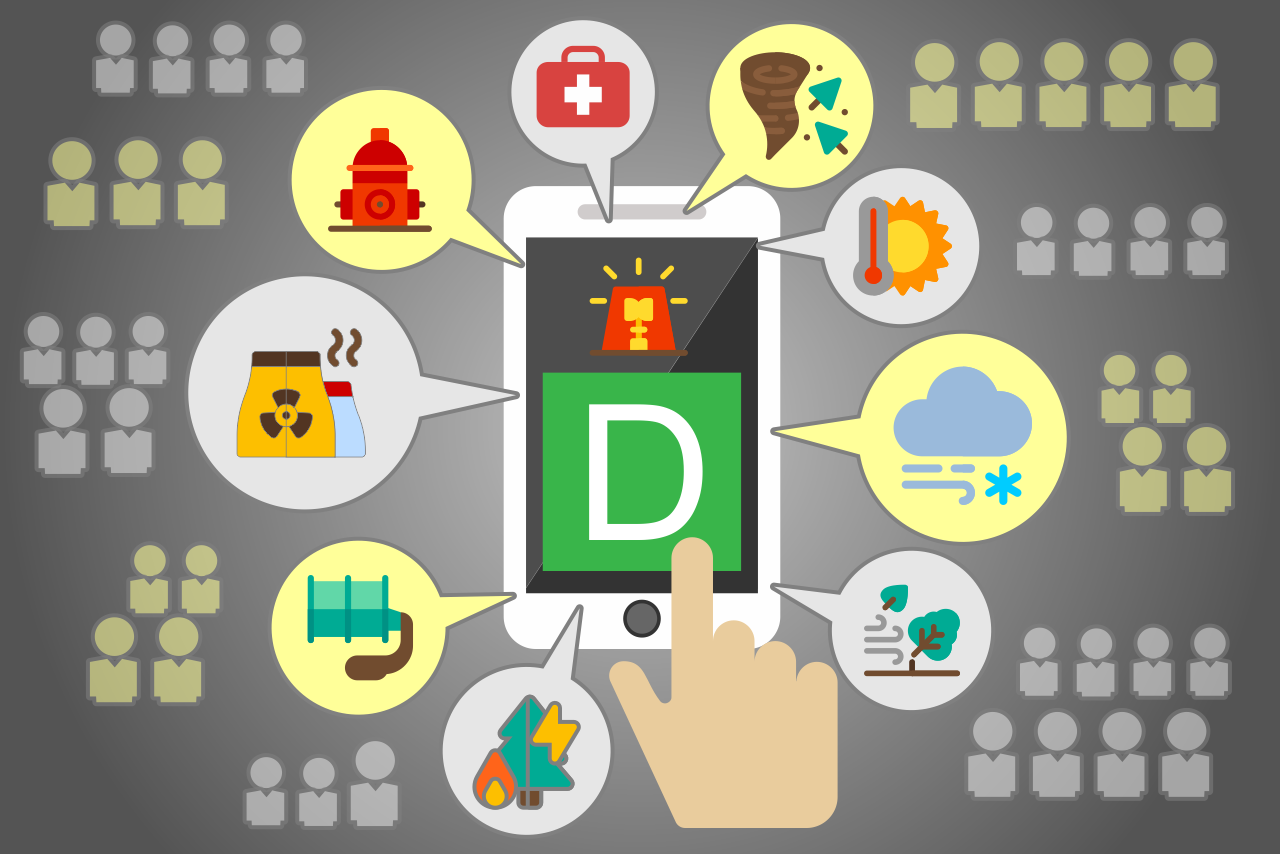
What are alerts in emergency warning systems?
Alerts in emergency warning systems are notifications or signals designed to inform individuals or communities about imminent or ongoing emergencies. These alert systems serve to provide critical information swiftly, helping people take necessary actions to protect themselves and their property.
Alerts can be delivered through various channels, including sirens, text messages, phone calls, social media, radio broadcasts, television announcements, and dedicated mobile applications.
In this blog post, you'll learn about the most common emergency alert types and how to deliver them as quickly as possible to your employees.
Table of Contents
1. What are alerts in emergency warning systems?
2. Types of alerts
3. The major emergency alert systems in use today
4. FAQ
Emergency alerts typically convey vital information such as the type of emergency, its severity, affected areas, recommended actions, and evacuation instructions if necessary. They may also include updates on the evolving situation and guidance on how to stay safe.
There are different types of alerts tailored to specific emergency scenarios, including:
- Weather alerts: These warn about severe weather events such as hurricanes, tornadoes, floods, or blizzards.
- Public safety alerts: These cover a range of emergencies, including hazardous material spills, terrorist threats, active shooter situations, or public health crises.
- Natural disaster alerts: These inform about earthquakes, tsunamis, wildfires, and other natural disasters.
- Amber alerts: These are specifically for child abduction cases, notifying the public to be on the lookout for a missing child.
Effective emergency alert systems are characterized by their speed, accuracy, and accessibility. They rely on advanced technology and coordinated efforts among various agencies and organizations to ensure timely and reliable dissemination of information, ultimately helping to save lives and minimize the impact of emergencies.

Be Ready to Send the Right Alert in Any Situation
During a fire, system outage, or security threat, you don’t have time to draft messages from scratch. Our 10 proven emergency alert templates will help you notify staff instantly, reduce confusion, and keep everyone safe. Download your copy.

The major emergency alert systems in use today
Emergency alert systems are designed to notify an audience about an emergency or other life-threatening or dangerous event so that people can be informed as quickly as possible so as to take appropriate steps to be safe.
When an emergency happens, there are six main types of emergency alert systems that are used to send information to people who may be affected. These are:
1. Mass notification systems
A mass notification system sends recorded messages to landline phones to alert the person who answers to a nearby situation that they should be aware of. However, as landline phone use is decreasing, there are fewer recipients of these types of messages.
2. Wireless Emergency Alerts (WEA)
These types of alerts are sent from the Federal Emergency Management Agency (FEMA) as well as state and local authorities to peoples' wireless devices, including mobile phones. Messages are sent to all cell phones in an affected geographical area.
3. SMS text systems
This system is used to send SMS text messages to numbers in a database that have opted in to receive both emergency and non-emergency communications.
4. Outdoor public warning systems
These are emergency warning systems that use stationary speakers and sirens placed throughout the community that will be activated in an emergency to warn people.
5. Color code alerts
Hospital and healthcare facilities often use color codes as part of their alert systems so they can communicate the type of emergency being experienced without alarming patients and visitors to the facility. They are a quick and easy way to let staff know what the emergency is, so they can be equipped to deal with it.
Color codes sometimes vary between facilities, but these ones are usually pretty standard:
- Code blue - life-threatening medical emergency
- Code red – a fire or a probable fire
- Code purple or pink – a missing child or child abduction
- Code gray – to alert security personnel that there is a dangerous person or criminal activity happening in the facility
- Code green - the hospital is activating its emergency operations plan
- Code orange – medical decontamination is needed, such as for a hazardous fluid spill
- Code silver – an active shooter in the building
- Code black - bomb threat.
6. Organization-wide emergency alert systems
An organization-wide emergency alert system, such as DeskAlerts, is one that can be deployed in a business, school, healthcare facility or any other organization to communicate quickly with employees in the event of an emergency.
These types of systems work by sending emergency communications to computers and mobile devices, using different communications channels, to alert employees to an emergency situation such as a fire, active shooter, natural disaster, chemical spill, bomb threat or other crisis.
See how hospitals, government agencies, and manufacturing companies implement emergency alert systems in real life → Explore Case Studies.
As an employer, you have a responsibility to keep your people safe. Familiarize yourself with the different types of emergency communication systems on the market and invest in one that is suited to your company’s needs.
With an emergency alert system in your organization, you will be able to broadcast important information to employees, alerting them in a crisis and providing timely information about the steps that they must take in order to be safe.
FAQ
What are the different types of alerts and what do they mean?
The different types of alerts include:
- Emergency alerts for fires, floods, natural disasters, etc.
- Amber alerts when a child is missing
- Silver alerts when seniors are missing
- Ashanti alerts for missing adults who are too old for an Amber alert, and too young for a Silver alert
What is an example of an emergency alert?
There are different types of emergency alerts that are issued by FEMA, where a sound is played on devices to let people know about the situation. One example is an alert that is issued by the President of the United States of America.
What color alerts are there?
There are three main color alerts that are used in law enforcement in order to help locate a missing person or let the community know about potential criminal activities in their area.
These include:
- Amber alerts - when a child under the age of 17 is abducted
- Silver alerts – when a senior citizen is missing
- Blue alerts - issued to help capture an offender at large who has killed or injured a law enforcement officer
- Camo alert – designed to alert the public when a current or former member of the armed forces goes missing and could pose a threat to themselves or others.
What are emergency alerts?
Emergency alerts are warnings that are sent to people to let them know of a dangerous or critical situation that could affect them. They may be sent via phone, text message, over public address systems, or through specialist emergency alert apps and software.
How many types of alerts are there?
There are six main types of emergency alerts, including mass notification systems, wireless emergency alerts, SMS text systems, outdoor public warning systems, color code alerts, and organizational emergency alert systems.
What are the different types of alerts?
There are several different types of emergency alerts that law enforcement use in different circumstances. Different case emergency systems include Amber alerts for a missing child, purple alerts for missing people with special needs, and silver alerts for missing senior citizens so that people can look out for an abducted child or missing person. There are also blue alerts that are issued when people need to look out for a particular offender.
Knowing the types of alerts is only the first step. The real challenge is ensuring your messages are seen instantly during emergencies. See how DeskAlerts’ emergency alert system solves this problem.
 Caroline Duncan
Caroline Duncan









